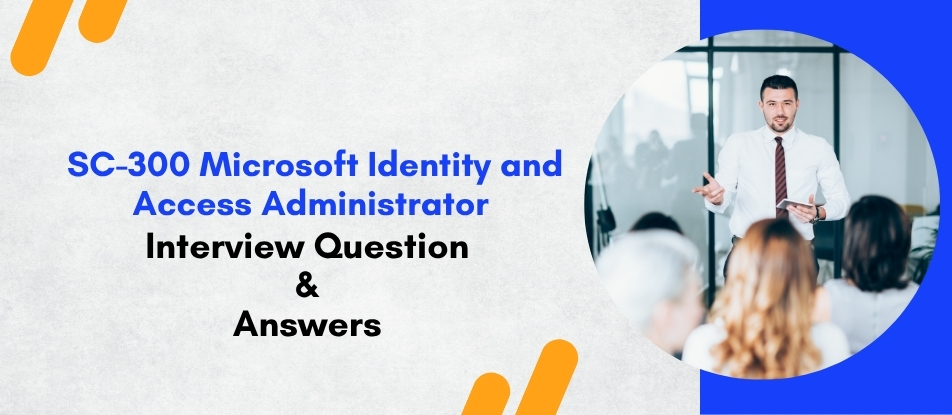
SC-300: Microsoft Identity and Access Administrator course provides in-depth training on managing identities, implementing secure authentication, and governing access across Microsoft 365 and Azure environments. Participants learn to configure and manage Microsoft Entra ID (Azure AD), apply Conditional Access, use Privileged Identity Management (PIM), and integrate identity solutions. This course is ideal for professionals aiming to enhance organizational security through identity-centric access control and governance.
SC-300 Microsoft Identity and Access Administrator Training Interview Questions Answers - For Intermediate
1. How does Azure AD manage application access using enterprise applications?
Azure AD allows administrators to integrate and manage enterprise applications through the Enterprise Applications blade in the Azure portal. This feature lets organizations configure SSO settings, assign user/group access, enforce Conditional Access policies, and monitor sign-ins. Admins can restrict app access, configure user consent settings, and enable provisioning to automate user account creation or updates within the app.
2. What are the default security features in Azure AD for small organizations?
Azure AD includes security defaults designed for organizations without dedicated security teams. These enable key protections like enforcing MFA for all users, blocking legacy authentication protocols, and requiring privileged users to register for MFA. Security defaults offer a simple way to enforce basic identity security without complex configurations.
3. How does self-service password reset (SSPR) work in Azure AD?
Self-service password reset allows users to reset or unlock their accounts without IT assistance. After registering authentication methods (e.g., email, mobile app, security questions), users can recover their accounts from the login screen. Admins can configure SSPR policies to include MFA verification, usage reporting, and integration with on-premises AD via password writeback.
4. What is the difference between pass-through authentication and password hash sync?
Password hash sync (PHS) synchronizes a hashed version of the user’s password to Azure AD, allowing authentication in the cloud. Pass-through authentication (PTA), on the other hand, validates credentials directly against the on-premises AD using an agent. While PHS offers better resiliency, PTA ensures passwords remain only on-prem and is preferred for strict compliance environments.
5. How do Conditional Access policies apply to guest users?
Conditional Access policies can be extended to guest users in Azure AD B2B. Admins can apply the same conditions—such as MFA, device compliance, or geographic restrictions—to guests, helping protect organizational data. Policies can be configured based on user type, group membership, or sign-in risk, ensuring external users meet internal security standards.
6. What are the key components of an access package in entitlement management?
An access package includes resources like Azure AD groups, SharePoint sites, and applications that users can request access to. It contains policies for approval, expiration, and periodic review. Entitlement management automates provisioning based on user role or need, reducing manual access requests while maintaining compliance and control.
7. How do directory roles support delegated administration in Azure AD?
Directory roles in Azure AD define administrative privileges over directory resources. By assigning roles such as Helpdesk Administrator, Password Administrator, or Groups Administrator, organizations can delegate specific tasks to different teams or individuals. This avoids over-provisioning and helps enforce least-privilege principles while distributing administrative responsibilities.
8. How is authentication strength used in Conditional Access policies?
Authentication strength determines the methods used to satisfy MFA in Conditional Access policies. Admins can define specific strength levels (e.g., passwordless methods like FIDO2 or Authenticator App) and require them for high-sensitivity applications. This allows fine-tuned enforcement of secure sign-in methods beyond basic MFA.
9. What are the methods available for registering devices with Azure AD?
Devices can be registered with Azure AD via Azure AD Join (corporate devices), Azure AD Registration (BYOD/personal devices), or Hybrid Azure AD Join (domain-joined devices synced with Azure AD). Each method offers different levels of control and is chosen based on device ownership, management strategy, and security requirements.
10. What is role-based access control (RBAC) in the Azure portal and how is it managed?
RBAC allows administrators to control who can perform actions on Azure resources like VMs, databases, or storage accounts. Permissions are assigned via roles at different scopes (subscription, resource group, or resource). Roles like Reader, Contributor, or Owner are built-in, and custom roles can be created for specific needs.
11. How does Azure AD Application Proxy enhance security for on-premises apps?
Azure AD Application Proxy securely publishes on-premises web applications to external users without requiring VPN access. It leverages Azure AD authentication and Conditional Access, ensuring access is granted only to authorized users. This approach reduces exposure by not directly exposing internal networks to the internet.
12. How can sign-in logs be used for monitoring and auditing?
Azure AD sign-in logs provide detailed records of user authentication attempts, including IP address, device info, location, and authentication method used. These logs help identify abnormal sign-in patterns, failed attempts, and potential brute force attacks. Logs can be filtered, exported, and integrated into tools like Microsoft Sentinel for deeper analysis.
13. What is the benefit of using group-based license assignment in Azure AD?
Group-based license assignment simplifies license management by automatically applying or removing licenses based on group membership. As users join or leave a group, licenses are assigned or revoked without manual intervention. This reduces administrative overhead and ensures consistent license allocation based on user roles or departments.
14. How do you control user consent to applications in Azure AD?
Administrators can configure consent settings to control whether users can grant permissions to third-party apps. Options include allowing user consent only for verified publishers or low-risk permissions, or disabling user consent altogether. Admin consent workflows can be used for approval when higher-risk permissions are requested.
15. How does Microsoft Secure Score assist in improving identity security?
Microsoft Secure Score provides a security analytics tool that measures an organization's identity and access security posture. It gives a numerical score based on implemented controls and offers recommendations to improve. Secure Score helps prioritize actions, track progress, and benchmark against industry standards for identity protection.
SC-300 Microsoft Identity and Access Administrator Training Interview Questions Answers - For Advanced
1. What is the significance of device identity in Azure AD, and how does it enhance access security?
Device identity in Azure AD is critical for enforcing secure access in a modern workplace. By registering or joining devices to Azure AD, organizations can apply Conditional Access policies that consider device compliance as part of the access decision process. Registered devices can be managed through Microsoft Intune, ensuring that only secure, policy-compliant endpoints access sensitive resources. This minimizes the risk of data breaches caused by unmanaged or compromised devices. Device-based Conditional Access, combined with compliance policies, supports Zero Trust by ensuring that identity verification extends beyond the user to the device itself.
2. How does Just-in-Time (JIT) access using PIM reduce insider threat risks?
Just-in-Time (JIT) access through Privileged Identity Management (PIM) minimizes insider threat risks by ensuring that administrative privileges are not granted permanently. Instead, users request elevation only when needed, and access is granted temporarily after passing validation steps like multi-factor authentication, justification, or approval workflows. This prevents privilege accumulation and limits the window of opportunity for potential misuse. The audit logs and alerts generated during JIT activation also enhance visibility and accountability, making it easier to investigate anomalies and deter malicious behavior.
3. What is the role of authentication context in Conditional Access policies?
Authentication context allows administrators to enforce specific authentication requirements based on the sensitivity of the application or data being accessed. With this feature, Conditional Access policies can require stronger controls like MFA, device compliance, or session limits for actions that involve sensitive operations, such as accessing a high-risk app or performing administrative tasks. This granular control helps organizations balance user productivity with security by applying stricter requirements only where necessary, thus aligning with data classification and compliance mandates.
4. Explain the concept of token lifetimes and how they affect security and usability.
Token lifetimes refer to the duration for which authentication tokens like access tokens, refresh tokens, and ID tokens remain valid. These tokens determine session persistence and reauthentication frequency. While longer lifetimes improve user experience by reducing sign-ins, they may increase security risk if a token is compromised. Azure AD allows token lifetimes to be managed via Conditional Access session controls or through custom policies using PowerShell or Graph API. Optimizing token lifetimes involves striking a balance between usability and security posture, often factoring in the risk profile of the user and the sensitivity of accessed data.
5. How does Microsoft Entra Permissions Management help in managing multi-cloud entitlements?
Microsoft Entra Permissions Management (formerly CloudKnox) provides visibility and control over permissions across Azure, AWS, and GCP environments. It helps organizations identify over-permissioned identities, enforce least-privilege access, and prevent privilege escalation risks. By continuously analyzing permission usage, it offers actionable insights and automated remediation to right-size permissions. Entra Permissions Management enables unified governance across multi-cloud infrastructures, ensuring that cloud entitlements remain aligned with actual usage and organizational policies, thus reducing attack surfaces and simplifying compliance.
6. What is workload identity federation and how does it support secure access from external systems?
Workload identity federation allows external identities—such as those from GitHub Actions, Kubernetes, or other CI/CD systems—to authenticate securely with Azure without requiring the use of long-lived credentials like client secrets. It enables token exchange between external identity providers and Azure AD by establishing trust through OpenID Connect (OIDC). This approach eliminates secret sprawl, enhances automation security, and aligns with modern DevSecOps practices. Federated workload identities are managed with granular access scopes, supporting secure and scalable integration between workloads and Azure services.
7. How can Microsoft Graph API be leveraged for identity governance automation?
Microsoft Graph API provides a unified programmatic interface to manage Azure AD identities, roles, groups, applications, and governance features. It can be used to automate onboarding processes, trigger access reviews, manage entitlement packages, and monitor sign-in events. For example, organizations can use Graph API to schedule automated group membership cleanups, enforce dynamic access assignments, or build custom dashboards for risk and compliance metrics. Leveraging Graph API helps achieve operational efficiency, reduce manual errors, and integrate identity governance workflows into enterprise automation pipelines.
8. How does identity-based segmentation help strengthen security in Microsoft environments?
Identity-based segmentation involves creating access boundaries not based on traditional networks or IP ranges, but on identity attributes like user roles, device compliance, or application sensitivity. By applying Conditional Access policies and role-based access control at the identity level, organizations can restrict lateral movement within their IT environment. For instance, finance users can be segmented from engineering applications, or high-risk users can be restricted from privileged actions. This approach enhances Zero Trust implementation and limits the blast radius of compromised identities.
9. What is the role of federation metadata in SAML-based SSO configurations?
Federation metadata is an XML document that defines the configuration settings necessary to establish trust between identity providers (IdP) and service providers (SP) in a SAML-based SSO setup. It includes key details like entity IDs, signing certificates, SSO endpoints, and claim formats. When configuring SAML-based SSO in Azure AD, importing the federation metadata ensures accurate and secure setup by automating the exchange of trust parameters. Keeping this metadata updated is vital for seamless authentication, especially when certificates are rotated or endpoints are modified.
10. How does Azure AD monitor and protect against consent phishing attacks?
Consent phishing is an attack vector where users are tricked into granting malicious apps access to organizational data. Azure AD combats this threat using tools like publisher verification, consent policies, and admin consent workflows. Publisher verification displays a blue checkmark for verified developers, increasing user trust. Consent policies limit what apps users can approve, while risky app detection flags suspicious apps based on usage behavior and reputation. Admins can review and revoke previously granted consents using the portal or Graph API, thereby securing user data and reducing attack exposure.
11. How can service principals be secured in Azure AD?
Service principals, which represent applications or automation scripts in Azure AD, must be secured with practices such as using certificate-based authentication instead of client secrets, applying Conditional Access for service accounts, and rotating credentials regularly. Limiting permissions using least privilege principles and assigning access via managed identities where possible further reduces risks. Logging access and using Azure AD Identity Protection helps monitor anomalies associated with service principals. Additionally, applying PIM for Azure resources enables JIT access even for non-human identities.
12. What is token replay and how can it be mitigated in Microsoft identity services?
Token replay occurs when a valid authentication token is intercepted and maliciously reused to impersonate a legitimate user. Microsoft mitigates this using multiple mechanisms: token binding (when supported by the platform), short-lived tokens, and Conditional Access policies that validate device compliance and risk. Claims like device ID and session ID can also limit token reuse across sessions or devices. Network-layer protections and application-level token validation practices further reduce the feasibility of replay attacks. Auditing and anomaly detection through Azure AD logs help in identifying and responding to such threats proactively.
13. Describe the role of dynamic groups and how they support scalable identity management.
Dynamic groups in Azure AD automate group membership based on user or device attributes like department, location, job title, or OS platform. This eliminates the need for manual membership management, which is especially useful in large enterprises with fluid roles or high employee turnover. Dynamic groups simplify license assignment, app access control, and policy targeting. For example, new sales employees automatically join the “Sales App Users” group and get appropriate permissions. This scalability improves administrative efficiency and reduces the risk of misconfigured access.
14. How do entitlement packages support collaboration with external partners in B2B scenarios?
Entitlement packages, available through Azure AD’s entitlement management feature, bundle resources—like groups, applications, and SharePoint sites—for streamlined access provisioning. In B2B scenarios, external users can request these packages through a branded portal. Admins can configure approval workflows, expiration policies, and re-certification cycles. This approach ensures that external collaborators gain appropriate access quickly and lose it automatically when no longer needed. It provides an auditable and compliant framework for managing external identities, enhancing both productivity and security.
15. How do custom security attributes improve access control strategies in Azure AD?
Custom security attributes enable organizations to define and assign additional metadata to users, groups, or service principals for fine-grained access control. These attributes can be used in Conditional Access, entitlement management, and dynamic group rules to enforce policies based on business-specific needs. For example, a custom attribute like “ProjectCode” can determine which resources a contractor can access. This enhances flexibility in policy design and supports use cases that standard directory attributes may not cover. Custom security attributes also aid in achieving compliance with industry-specific or regional regulatory requirements.
Course Schedule
| Dec, 2025 | Weekdays | Mon-Fri | Enquire Now |
| Weekend | Sat-Sun | Enquire Now | |
| Jan, 2026 | Weekdays | Mon-Fri | Enquire Now |
| Weekend | Sat-Sun | Enquire Now |
Related Courses
Related Articles
Related Interview
- DevOps & GitHub Foundations (AZ-2008) Core Principles Training Interview Questions Answers
- SAFe® 6.0 POPM Training Interview Questions Answers
- Piping Design and Drafting Interview Questions Answers
- Machine Vision Systems Training Interview Questions Answers
- DevOps Training Interview Questions Answers
Related FAQ's
- Instructor-led Live Online Interactive Training
- Project Based Customized Learning
- Fast Track Training Program
- Self-paced learning
- In one-on-one training, you have the flexibility to choose the days, timings, and duration according to your preferences.
- We create a personalized training calendar based on your chosen schedule.
- Complete Live Online Interactive Training of the Course
- After Training Recorded Videos
- Session-wise Learning Material and notes for lifetime
- Practical & Assignments exercises
- Global Course Completion Certificate
- 24x7 after Training Support

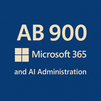
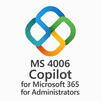
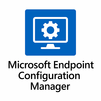
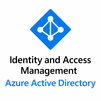





 Join our Live Instructor-Led online classes delivered by industry experts
Join our Live Instructor-Led online classes delivered by industry experts